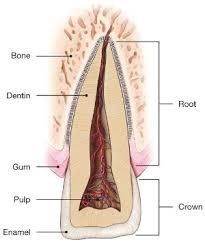
The tooth and nothing but the tooth
Posted on September 21
Dental Bondage
Hello again, I hope that you are safe and well. As I write we’ve been open again for 13 weeks and all is good. We are still not back to 100% and probably won’t be for a while yet but we are doing dentistry and making a difference. I’m proud of my team for their incredible efforts and professionalism in what has been a demanding few weeks. Everybody feels safe and secure with the stringent protocols in place. Getting used to it all now and second nature. Still getting used to wearing what feels like a shower curtain though.
Dental Bonding
Did I say bondage, I meant bonding! Made you look. Well I think we need a bit of daft at the moment. So, what is dental bonding? Well we can now bond materials to teeth rather than making holes that have a retentive element which often means taking extra tooth away to get a filling to stay in once set. Also, we don’t need to grind teeth for crowns as much. All of this means that the teeth remain stronger as less is removed and also there is less chance of damage to the pulp (nerve of the tooth) that can lead to an abscess and problems from this.
Most of the time we are bonding tooth coloured materials like composite, ceramic or even more modern hybrid materials that have a bit of both in them.
Great for the young
Bonding is good for any age as it is minimally invasive. We can now do aesthetic dentistry with just additive techniques without tooth grinding. It is particularly good for young people who have had a dental trauma. The pulp in young teeth is large. It shrinks back into adulthood. There is more chance of damage to the pulp with a fracture or decay in a young tooth. In the “good old days” if a young person fractured a tooth due to trauma, they had the rest of the tooth ground down for a crown. This weakened the tooth and had a relatively high chance of abscess leading to a poor long-term prognosis. Also, the gum of a young tooth is not mature, and it can shrink back a bit and settle into the 20’s. So, composite resin bonding is perfect because we can just add to without further damage and if the gum moves, we can add to again without having to drill off a crown or ceramic veneer. Each time this happens there may be more tooth damage. Once into the 20’s then you can consider a ceramic veneer as the gums will be more stable and the ceramic is smoother and more colour stable and can make the tooth a bit stronger. The main thing though is thinking about the longevity of the tooth rather than the restoration and thinking about how we can keep a tooth for life.

Young teenager after an accident. Composite bonding keeping teeth healthy with no further damage.
Until next time. Take care and be good.
